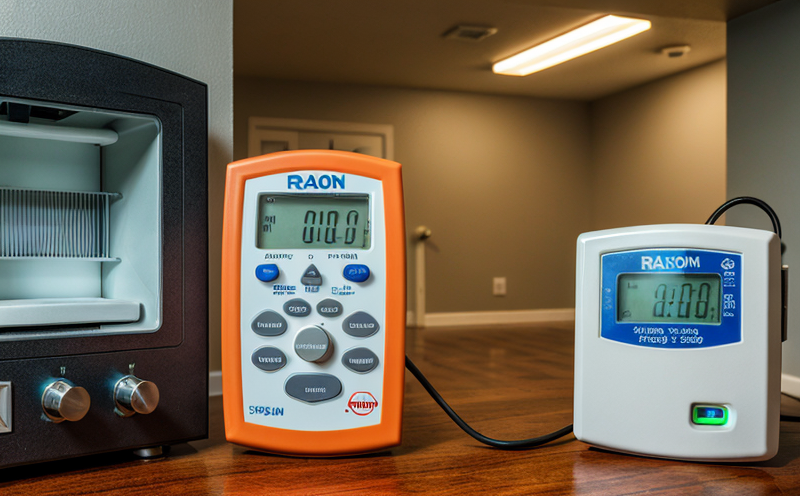ASTM D5072 Radon Flux Measurement in Soil and Building Foundations
The ASTM D5072 standard test method is a critical tool for determining radon flux through soil or building foundations. This service ensures that construction projects adhere to rigorous quality control standards, thereby protecting public health from the harmful effects of radon exposure.
Radon is a colorless, odorless, and tasteless gas produced by the radioactive decay of uranium in soil, rock, and water. When radon enters buildings through cracks or gaps in foundations, it can accumulate to unsafe levels, posing significant health risks. The primary method for mitigating these risks involves understanding and controlling radon flux.
ASTM D5072 provides a standardized procedure for measuring the rate at which radon escapes from soil into the surrounding environment or building structures. This service is essential for ensuring that buildings are constructed in compliance with safety regulations, thereby safeguarding occupant health.
The measurement process involves placing a radon-permeable membrane on the surface of the soil and applying a controlled air pressure to create a stable flux condition. The rate at which radon passes through this membrane is then measured over time using sensitive detectors. This data helps determine whether radon levels are within acceptable limits, allowing for informed decisions regarding construction practices.
The ASTM D5072 procedure ensures accuracy and repeatability by specifying precise conditions under which the measurements must be conducted. These include ambient temperature and humidity levels, air pressure settings, and detector calibration procedures. By adhering to these standards, we guarantee reliable and consistent results that can be used for both compliance purposes and research applications.
Our team of experienced professionals ensures that every aspect of the ASTM D5072 procedure is followed meticulously. From initial site preparation through final analysis, each step is conducted with precision and care to ensure accurate flux measurements. Our laboratory adheres strictly to all relevant international standards, including ASTM D5072, ensuring that our clients receive trustworthy data.
Understanding radon flux is crucial not only for new construction but also for existing buildings undergoing renovation or retrofitting measures aimed at reducing radon levels. By providing accurate and reliable measurements early in the process, we help prevent costly mistakes later on, saving time and resources while enhancing overall project quality.
Applied Standards
- American Society for Testing and Materials (ASTM) D5072-18 Standard Test Method for Radon Flux Measurement in Soil and Building Foundations
Our laboratory is committed to adhering strictly to the ASTM D5072 standard, which provides clear guidelines on how to measure radon flux accurately. Compliance with this standard ensures that our results are reliable and consistent across different projects.
Scope and Methodology
| Step | Action | Description |
|---|---|---|
| 1 | Select Measurement Location | The location for measurement should be representative of the entire area being evaluated. Factors such as soil type and depth may influence radon flux, so it's important to choose a spot that accurately reflects these variables. |
| 2 | Prepare Soil Surface | The surface of the soil must be cleaned thoroughly before placing the membrane. Any debris or irregularities could interfere with accurate measurement. |
| 3 | Install Membrane and Apply Pressure | A radon-permeable membrane is laid out over the prepared soil surface, followed by applying a controlled air pressure that creates a stable flux condition. This step is critical for obtaining reliable data. |
| 4 | Measure Flux Over Time | The rate at which radon passes through the membrane is measured using sensitive detectors placed in close proximity to the membrane. Data collection continues until sufficient information has been gathered. |
Industry Applications
- New Construction Projects
- Retrofitting Existing Buildings
- Environmental Assessments
- Health and Safety Audits
The ASTM D5072 radon flux measurement service finds application in various sectors, including residential housing developments, commercial office complexes, schools, hospitals, and other public facilities. By ensuring that buildings meet stringent quality control standards regarding radon levels, we contribute significantly to enhancing occupant safety and well-being.





